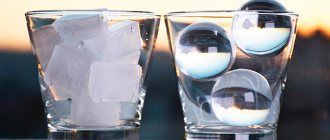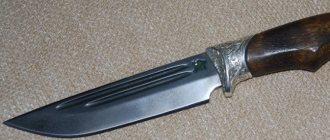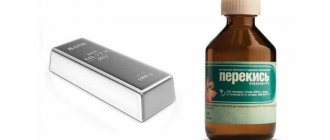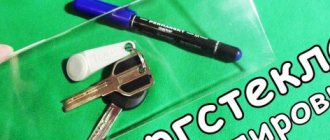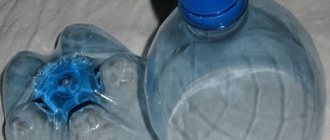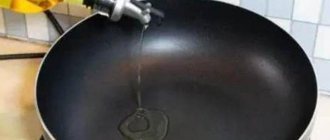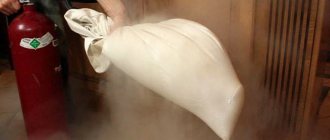Acetic acid is used in a large number of culinary recipes. It can also be used in the preparation of various medicinal mixtures according to folk schemes. Vinegar of varying concentrations can be used as an ingredient. Sometimes 70 percent is required, which is sold ready-made in the store. Sometimes a 3-, 5-, 7-, 9 percent solution is needed. To obtain it, you need to dilute the liquid that is already available. This way you can get a product suitable for any of your purposes. In this article you will learn how to dilute 70 percent vinegar.
Photo from the site: womenssecretszone.ru
What does vinegar essence consist of?
70% vinegar essence consists of acid and ordinary water. Of the total volume, 7 parts are directly acid, and 3 parts are water. Sometimes the ratio is different, which is shown on the label. The product is not used in this form as it is too concentrated. Table vinegar, which is sold in the store, is already diluted to a certain extent. You may ask, why then dilute the essence if it is possible to purchase a ready-made version? The answer is simple: it’s more economical. From one tea-sized spoon you will get a whole glass of already diluted table vinegar.
Keep the essence out of the reach of children. They can drink a concentrated solution, which will cause burns to the mucous membrane of the throat and damage to the esophagus.
In the store you can find table vinegar of different concentrations. But there is no guarantee that you will immediately find exactly the product you need. It is not worth buying 3% vinegar instead of 9% vinegar. It’s better to dilute the essence yourself to the required concentration.
Photo from the site: www.liveinternet.ru
Practical examples and tables of values
And now from theory to practice. 1-liter, 2-liter and 3-liter jars are usually used when preparing everyone’s favorite homemade preparations for the winter - cucumbers, spicy “Mother-in-law’s Tongue” salad and other table dishes. How much and what should be pledged?
For cucumbers and tomatoes, the ratio of components and water is approximately 1:1. This means that in a liter jar there will be about 0.5 liters of pickling and the same amount of the finished product.
Then we can easily calculate not only how to dilute acetic acid 70 to 9, but also in what quantities to take other products - such tables will help us with this.
| per jar 2 liters | per jar 3 liters | |
| cucumbers | 1 kg | 1.5 kg |
| water | 1 l | 1.5 l |
| salt | 3.5 tbsp (70 g) | 5 tablespoons (100 g) |
| sugar | 1.5 tbsp (30 g) | 2 tbsp (40 g) |
| garlic | 4 cloves | 6 cloves |
| horseradish | 2 sheets | 3 sheets |
| vinegar 9% | 6 tablespoons | 9 tablespoons |
| vinegar 70% | 2 teaspoons | 3 teaspoons |
| dry mustard | 2 dessert spoons | 3 dessert spoons |
These are the simple ratios - print these tables and save them as a reminder. Then the pickles will turn out exceptionally tasty and will be stored well.
How to breed?
Dilute 70% acetic acid with water. They do this in accordance with the proportions. They are unique for a specific solution. People with mathematical abilities will quickly figure out how to do everything. For those who didn’t particularly like to count at school, there is a detailed table.
First formula
In order to correctly calculate the proportion, decide on the amount of vinegar you need. Convert it to grams. This will be the end result. To get it, you need to take the original amount of vinegar essence, multiply it by the percentage of the available concentration and divide by the percentage of the desired concentration. What emerges is a unique formula that is accurate and practical.
Photo from the site: www.liveinternet.ru
Second formula
If the first option seems difficult to you, you can try another formula, which is also quite easy to use.
How to dilute vinegar 70% and find out how much essence you need to take? The amount of initial liquid will be equal to the required concentration of the solution, multiplied by the final volume required in a particular case, and divided by the initial concentration. Thus, you can calculate how much essence to take to get the required amount of table vinegar.
When diluting vinegar essence, make sure that it does not get on the mucous membranes of the eyes. Also, try not to breathe in the vapors from this product. All this is unsafe!
Acetic acid must be diluted in a glass container. First, water is poured into it, and then vinegar essence is added.
Photo from the site: www.liveinternet.ru
It is important to know
- You definitely need to remember that the shelf life of vinegar essence or simple natural vinegar is different. While the acid will not lose its properties for more than ten years, the natural product should only be used for a few years. After this period, the beneficial properties disappear, even if the vinegar looks quite suitable for use.
- It is not recommended to use the essence in mustard preservation recipes. Such a mixture can spoil the workpiece even before it is sent for storage. Instead, it is better to choose a different recipe or use simple table vinegar.
- Acetic acid is a residue from the production of fertilizers from natural gas or sawdust. Before using the product in preparations, you need to think several times whether preservation with such an ingredient will be useful. Even if the contents of a glass container are stored for several years, you should not risk your health when serving your favorite pickled vegetables.
- If you cannot do without preparing acetic acid, you need to store it out of the reach of small children. Such a concentrated product can cause a painful, extensive burn in a child if it comes into contact with the skin, and if ingested, it can be fatal.
- Working with acid requires special attention and caution. If it gets on the skin, immediately rinse the injured area with cold water; if the damage is serious, consult a doctor immediately.
Acetic acid is banned in many countries as a product for use in kitchens. Our shelves are replete with harmful products produced specifically for large-scale production. Before purchasing an essence, you need to decide whether it is worth risking your health.
Some ready-made calculations
You don’t have to rack your brains, but use ready-made, calculated proportions. We will give you the most popular of them as an example.
- If you need 30% vinegar, then dilute the essence using a ratio of 1:1.5.
- To prepare a 10% solution, combine 1 part acid with 6 parts water.
- How to dilute 70 vinegar to 9 percent? To get this result, use a ratio of 1:7.
- To make 8 percent vinegar, mix 1 part vinegar and 8 parts water.
- For a 7% solution, a proportion of 1:9 is needed.
- If you combine water and acid in a ratio of 11 to 1, you get a liquid with a concentration of 6%.
- The ratio of vinegar essence and water in a ratio of 1:13 will give a 5% vinegar solution.
- A proportion of 17 to 1 part will give vinegar with a concentration of 4%.
- A 3% solution is made from 22.5 parts water and 1 part 70% vinegar essence.
Information on how to dilute 70 percent vinegar can be presented in a convenient table. By hanging it in the kitchen, you can always use ready-made calculations in a timely manner.
Online vinegar calculator
Here, I found some interesting information that might be useful to someone: Characteristics of different types of vinegar Conventionally, all types of vinegar can be divided into two types depending on the preparation method: synthetic and natural. Synthetic (also called table) is preferred by many housewives in our country, using it for acidifying dishes and sauces, for canning, and for loosening dough. It is a product of chemical synthesis of natural gas or sublimation of wood. Synthetic vinegar was first synthesized by the German chemist Hoffmann in 1898; since then, the technology for its production has undergone many changes, but the essence - artificiality - has remained unchanged. The strength of synthetic vinegar is 7-9%. Synthetic vinegar has become popular in many countries around the world due to its low cost. But this type of vinegar is not beneficial for humans. Over time, it was banned in France and the USA. Unfortunately, in the countries of the former USSR this product has not lost its popularity. Synthetic vinegar is the basis for the production of vinegar products. This product is great for removing stains and restoring frequency in the house, but it should not be eaten. Natural vinegar is the result of fermentation of alcohol-containing raw materials with the help of acetic acid bacteria. Natural vinegar is obtained from grape wine, apple cider, beer wort, and fermented fruit and berry juices. Therefore, natural vinegar contains not only acetic acid, but also other fruit acids, such as malic, citric, lactic, as well as ascorbic acid, aldehydes, pectins, esters and other organic compounds. All of the above listed substances that make up vinegar give the product its original taste, aroma, as well as consumer characteristics. The strength of natural vinegar is 4-6%. Natural vinegar, unlike table vinegar, may contain slight sediment. Due to the fact that natural vinegar is made from various ingredients, there are its varieties: Balsamic vinegar (Italy) White grape variety with a high sugar content Thick, more or less dark liquid with an exquisite harmonious sweet and sour taste 6% acid, 30% juice In salads, soups, when marinating fish and seafood, as a sauce with cheese and ice cream. Rice vinegar (China, Japan, Korea, Indochina countries) Rice Soft, sweetish smell, color from light yellow to black 6% acid As a seasoning, for dressing salads, marinades for meat, in drinks Wine vinegar (from white wine) Dry white wine Subtle aroma, exquisite soft taste 5-7% For dressing salads and seafood dishes Wine vinegar (from red wine), (Spain) Selected Bordeaux wines (cabernet, merlot) Woody aroma, amber color Less than 6% For sauces, salads , marinating red meat
How to dilute 9% vinegar to 6%?
If it’s more or less clear how to dilute 70% essence, then what about already diluted vinegar that needs to be diluted further? In this case, you need to take one part water for two parts of essence. That is, two glasses of 9 percent vinegar should be diluted with one glass of water. This will yield three cups of 6 percent vinegar.
Photo from website: fb.ru
You can make calculations in grams. In this case, for every 100 grams of 9% vinegar you need to take 50 grams of water, and you will get a 6% table solution. This way, you will always know how to dilute 9 percent vinegar. You won't need to use complex formulas every time.
Sometimes the solutions are interchangeable. For example, if you need to use 6% vinegar, but you only have 3%, you can add that too. It’s just that the amount of such additive will be higher. Ultimately, the volume of the active substance will be the same.
Using the same principle, you can answer the question “how to dilute 9 vinegar to 3 percent?” To do this, you will need to dilute one glass of vinegar essence with two glasses of water.
Using these formulas, you can determine how to dilute 70 percent vinegar to 20 percent.
Dilution table
A table for diluting types of vinegar and water is presented for visual use by housewives. It is designed not just for informational purposes. If you prepare a brine with undiluted essence, the vegetables may turn into a mush that is unsuitable for consumption. Find out if you can use balsamic vinegar.
| Conversion table for acetic acid concentrations per 1 liter of solution | ||||||||
| Concentration of the resulting solution | Initial concentration of acetic acid | |||||||
| 60% | 70% | 80% | 90% | |||||
| Acid, ml | Water, ml | Acid, ml | Water, ml | Acid, ml | Water, ml | Acid, ml | Water, ml | |
| 2% | 33 | 967 | 29 | 971 | 25 | 975 | 22 | 978 |
| 2,5% | 42 | 958 | 36 | 964 | 31 | 969 | 28 | 972 |
| 3% | 50 | 950 | 43 | 957 | 38 | 963 | 33 | 967 |
| 3,5% | 58 | 942 | 50 | 950 | 44 | 956 | 39 | 961 |
| 4% | 67 | 933 | 57 | 943 | 50 | 950 | 44 | 956 |
| 4,5% | 75 | 925 | 64 | 936 | 56 | 944 | 50 | 950 |
| 5% | 83 | 917 | 71 | 929 | 63 | 938 | 56 | 944 |
| 5,5% | 92 | 908 | 79 | 921 | 69 | 931 | 61 | 939 |
| 6% | 100 | 900 | 86 | 914 | 75 | 925 | 67 | 933 |
| 6,5% | 108 | 892 | 93 | 907 | 81 | 919 | 72 | 928 |
| 7% | 117 | 883 | 100 | 900 | 88 | 913 | 78 | 922 |
| 7,5% | 125 | 875 | 107 | 893 | 94 | 906 | 83 | 917 |
| 8% | 133 | 867 | 114 | 886 | 100 | 900 | 89 | 911 |
| 8,5% | 142 | 858 | 121 | 879 | 106 | 894 | 94 | 906 |
| 9% | 150 | 850 | 129 | 871 | 113 | 888 | 100 | 900 |
| 9,5% | 158 | 842 | 136 | 864 | 119 | 881 | 106 | 894 |
| 10% | 167 | 833 | 143 | 857 | 125 | 875 | 111 | 889 |
For what purposes are solutions of different concentrations used?
Diluted vinegar may be needed for medicinal purposes. With its help, the temperature is quickly reduced. This method causes less harm than antibiotics and other drugs. For compresses, use a 6 percent solution.
Photo from the site: sovetclub.ru
Traditionally, vinegar is used in cooking. It comes in very handy in a barbecue marinade. For such purposes, they also take the 6 percent option. The meat is soaked in it, seasonings are added and kept for some time. Vinegar makes the kebab tender.
Photo from website: satsis.info
For preservation, 9% table vinegar is more suitable. It ensures the safety of homemade “twists” and excellent taste.
Photo from the site: moikompas.ru
To season vegetable salads, mushrooms, dumplings and other dishes, use a 3% vinegar solution. It has a subtle taste, so it complements but does not overwhelm other products.
25% acetic acid is an excellent weed killer. By watering the soil with this solution, you will get rid of them for a long time.
Photo from website: dnpmag.com
Precautionary measures
It is necessary to take the most responsible approach to the issue of long-term storage of vinegar solutions of any concentration. Do not keep bottles in the refrigerator. There they may be caught by mistake and drunk. The top shelves of kitchen cabinets are best suited for this purpose.
You should not display bottles on open shelves, even the top ones. Contact with sunlight is undesirable. The essence and 9% solution will suffer the least from this, but apple or, especially, wine solution may deteriorate.
It is best to store any type of vinegar concentrates in the original factory packaging to avoid annoying mistakes and accidents. As a last resort, pour it into a transparent glass container, providing it with a bright label indicating the characteristics of the contents.
